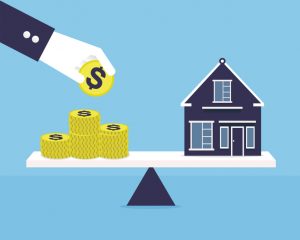Economist Ben Rabidoux of Edge Analytics (www.edgeanalytics.ca) reviews the Canadian mortgage market for May 2023.
General
Rob McLister of of Rates.ca talks mortgage stress test with BNN Bloomberg
Posted by: John Burgess
Canadian homebuyers will face a tougher mortgage stress test starting next week, one that will reduce their buying power and possibly contribute to a cooling of the market that’s already in progress. Read more here
David Rosenberg talks real estate bubbles
Posted by: John Burgess
David Rosenberg, Chief Economist at Rosenberg Research, talks housing bubbles with BNN.
Fixed vs variable : What to choose and what to consider….
Posted by: John Burgess
The decision between a fixed and a variable rate is never easy. Are rates going up? Are they going down? What is the Bank of Canada doing? What is the economy going to do? David Larock provides an excellent viewpoint of the current situation. Might help in your decision making.
Are fixed rate mortgages going to get more expensive?
Posted by: John Burgess
The last guidance from the Bank of Canada suggests that mortgage rates are going to stay low in the near term meaning the next 12 to 18 months. A couple of important indicators, especially in the fixed rate market suggests that there is a distinct possibility that fixed rates will begin to rise and could climb by as much as 100bps (1%).
Quoting heavily from work by Capital Economics Stephen Brown, the National Post discusses fixed rates rising about 50bps (0.5%) this year.
Why is this possibly going to happen and is a reasonable prediction? Two main predictors have gotten more expensive of late as economies strengthen as pandemic measures are normalized and vaccination rollouts shake off the what should have been expected logistical challenges of producing and supplying vaccine to billions.
One of the main activities keeping fixed rates low has been the Bank of Canada Quantitative Easing measures to the tune of $4-5 billion a week in Government of Canada bond markets. By actively buying bonds in the open market the Bank of Canada has kept yields extremely low. The strengthening economies though have changed investors risk appetites and investor activity has been enough to shake off the Bank of Canada buying caused headwinds and see yields begin to rise. Both the 5 and 10 year bond yields have risen by 10bps (.1%) in the last week.
On a side note, eventually the Quantitative Easing program will be wound down when inflation hits targets and productivity gaps disappear. This all but guarantees rising fixed rates as bonds are left purely to market forces – although there is speculation that governments cannot actually allow this to happen.
The second indication that predicts a rise in fixed rates is the rise in yield in Canada’s 5-year rate swap. The 5-year rate swap is a good proxy for the bank’s funding costs -so if funding costs are rising then margins are shrinking and if margins are shrinking sooner or later they are going to be pushed back up and the way that will be done is to increase the fixed rate.
Ratespy.ca‘s last few articles discuss both the growth in bond and swap yields and their impact on rates.
What does this suggest? Now is a good time to chose a fixed rate mortgage and possibly consider refinancing your current mortgage to lock in what are currently rock bottom fixed rates for the next five years. Business schools teach you that banks are risk adverse, when borrowing for your home it is perhaps best to be risk adverse also. A fixed rate from a fair penalty lender is the best way to prevent mortgage inspired household finance risk at this time for borrowers.
Bank of Canada rate announcement review
Posted by: John Burgess
As expected by the majority analysis, the Bank of Canada (BoC) kept its key policy rate unchanged at its first meeting of 2021.
The target overnight rate will be maintained at 0.25% where it has been since the beginning of the pandemic. This will keep the majority of bank’s prime rates at 2.45% and subsequently variable rates at the historic lows we have been seeing. The bank expects to maintain the policy rate at this level until 2023 when it sees its 2% target for inflation as sustainable as the combination of high household savings, excess capacity and pent up consumer demand returns to balance.

Furthermore, the bank will continue with its Quantitative Easing program of at least $4 billion a week which will keep the Government of Canada bond yields at the levels we are currently seeing. For the housing market, this means we can expect fixed interest rates to remain at their current levels.
The economy rushed back to life during the summer after grinding to a halt in early spring only to once again slow as the expected 2nd wave of the pandemic renewed lockdown type responses to surging infection rates. The earlier than expected arrival of vaccines – regardless of logistical challenges of getting needles into arms – has brought a certain optimism that the near term effects of the pandemic will dissipate in a reasonable amount of time. Economic growth in the 1st quarter of 2021 is expected to be negative but a strong rebound in the 2nd quarter is the beginning of robust growth for 2022 and a return to “normal” levels in 2023.
In summary, still some short term pain in the economy but the BoC will continue with its current measures of the virtually rock bottom policy rate and market intervening Quantitative Easing programs resulting in a continuation of record low interest rates for the next 12 months and possibly longer.
Fixed interest rates for non economists
Posted by: John Burgess
The interest rate of your fixed rate mortgage is directly tied to the cost of the money that the bank loans to you. Banks have many different ways to borrow money which they then loan to consumers, the most basic way they do this is accepting your deposits and paying you interest on your deposit – they have effectively borrowed money from you. Consumer deposits are the banks cheapest source of funds.

Another important source of funds is the bond market. A bank issues bonds – borrowing money from investors – and then lends the money to its clients and profiting by the difference in what it pays in interest to its investors and receives in interest from its borrowers.
The cost to the bank of this source of funds is tied to the price of Government of Canada (GoC) bonds. GoC bonds are considered risk free and bank bonds are generally priced with a risk premium over and above the price of GoC bonds.
So by predicting the movement in the price of GoC bonds we can predict the movement in fixed interest rates to consumers. The usual ebb and flow of the economy and allocation of investments across risk tends to move the bond markets. When investors are feeling risk adverse bond yields go down as they buy bonds in favour of other assets – when investors are feeling more optimistic and therefore less risk adverse bond yields go up as investors sell bonds to invest money elsewhere.
And then comes a pandemic and this thing called Quantitative Easing (QE) which is a Bank of Canada (BoC) tool to help it with some of its core functions namely stability in the financial markets and a predictable and stable inflation rate. The BoC’s current QE of close to $4 billion a week in intervention in the medium term bond markets is a significant contributor to keeping fixed rates low and the expectation that this QE program will continue means we will continue to see low fixed rates until the economy shakes off the pandemic.
At first, the QE program was about liquidity and stabilization of the market. That focus has shifted and is now about the BoC maintaining its inflation mandate. By keeping rates low and encouraging consumer and business borrowing to provide capital into the economy in the form of spending and investment in goods and services. With a weak pandemic ravaged economy – cheap money is needed in the economy and the QE program keeps interest rates low which encourages borrowing and spending and investment.
As the economy improves and employment begins to return to normal or the new normal as it is clear this pandemic period will have lasting effects on how we work, that QE program will begin to taper off. It is not expected to happen very soon. So even as the economy improves with the widespread introduction of the Covid19 vaccines the BoC will most likely keep its QE program in place to insure that any recovery does not stall. Subsequently, today’s low rates are not disappearing very soon.
The economy and variable rates for non economists
Posted by: John Burgess
For all borrowers one of the key decisions when choosing a mortgage product is whether to choose a variable or fixed rate mortgage. With one lender having recently offered a 0.99% variable rate mortgage it is perhaps worthwhile to look at the pros and cons of the variable rate mortgage.
Variable rate mortgages are tied to the Bank of Canada’s target for the overnight rate which is the Bank’s key tool for influencing the inflation rate. This is one of the Bank’s four main mandates, to maintain a stable and predictable inflation rate in the middle of the one to three percent range. The Bank’s inflation target is therefore two percent.
As of today (January 4th, 2021), the target overnight rate is 0.25% and as a rule of thumb banks add 2.20% to that rate to set their prime rate. This prime rate is the variable rate which they then offer various discounts to. It should be noted that not all banks set their prime rate in the same way so asking the specific number for the prime rate is probably a good idea as your agreements might just reference the bank’s prime rate.
Without getting into the discussion only an economist understands about inflation, we can just accept that the inflation rate in Canada stands at one percent so the overnight rate is extremely low and will not go much lower as the Bank of Canada has continuously provided guidance that they will not lower the rate into negative rates. Recently though, the guidance has been that smaller cuts to the rate than the usual and customary multiples of 0.25% are possible. So it is very possible that we will see a further lowering of the overnight.
Why is inflati on so low? The economy essentially stalled due to the pandemic and spending has ground to a halt. As the economy recovers and inflation begins to move upwards so will the overnight rate as the Bank keeps inflation within the one to three percent range. It should be noted that in January 2020 the target rate was 1.75%. So we have a fair idea of where the target rate and therefore prime rate can go as Canada’s economy strengthens….it is only going up.
on so low? The economy essentially stalled due to the pandemic and spending has ground to a halt. As the economy recovers and inflation begins to move upwards so will the overnight rate as the Bank keeps inflation within the one to three percent range. It should be noted that in January 2020 the target rate was 1.75%. So we have a fair idea of where the target rate and therefore prime rate can go as Canada’s economy strengthens….it is only going up.
When will this happen? According to the Bank of Canada, they do not expect the target rate to begin to climb before 2023, recently the Royal Bank of Canada economists called Q3 2022 as the first upward move of the target rate.
So what does all this mean for borrowers?
1. Very low variable rates available with big discounts to prime are being offered
2. These rates will stay where they are for the next 18 months
3. When they start to move upwards it will be in increments of 0.25%
4. When the rate goes up your payment will go up
5. It is very possible that your variable rate will become higher than a fixed rate
And what does all that mean? Borrowers who choose a variable rate product need to pay attention especially if they have a constrained budget. The silver lining is that if a fixed rate becomes more attractive, the penalty for exiting a variable rate mortgage is three months interest at which time you can move to a fixed rate mortgage.
If you want to forget your mortgage for the next four years and 9 months, choose a fixed rate mortgage. If you are the type who pays attention economic indicators : variable rate mortgages are extremely attractive today.
The type of company I want to be : Chapman’s
Posted by: John Burgess
 There are certain ideals and values I have always tried to bring to my business endeavours and Chapman’s Ice Cream recent decisions to maintain pandemic related pay increases, donate freezers and keeping its employees on the payroll after a fire at their manufacturing plant is the embodiment of those ideals. Please note, they did not just donate space in their freezers they sourced two specialty freezers capable of maintaining the sub -70C temperatures required to store the needed vaccine.
There are certain ideals and values I have always tried to bring to my business endeavours and Chapman’s Ice Cream recent decisions to maintain pandemic related pay increases, donate freezers and keeping its employees on the payroll after a fire at their manufacturing plant is the embodiment of those ideals. Please note, they did not just donate space in their freezers they sourced two specialty freezers capable of maintaining the sub -70C temperatures required to store the needed vaccine.
See the complete story here : Complete story here
Understanding mortgage penalties
Posted by: John Burgess
 All mortgage contracts have a penalty for prepaying the entirety of the mortgage early. For people seduced by some of the extremely low rate mortgages available these can be extremely high, up to 3% per annum of the remaining balance for the remaining term. The standard language for fixed rate mortgages is the higher of 3 months interest or the interest rate differential. The interest rate differential (IRD) is simply the difference between your current rate and the rate being charged on the product with a similar term to the time remaining in your term.
All mortgage contracts have a penalty for prepaying the entirety of the mortgage early. For people seduced by some of the extremely low rate mortgages available these can be extremely high, up to 3% per annum of the remaining balance for the remaining term. The standard language for fixed rate mortgages is the higher of 3 months interest or the interest rate differential. The interest rate differential (IRD) is simply the difference between your current rate and the rate being charged on the product with a similar term to the time remaining in your term.
So IRD x remaining time x remaining balance = the penalty.
The surprise comes in which rates the bank uses to calculate the difference, whether they use the posted rate or the actual rate. David Larock’s blog post from July, 2020 is an excellent discussion of what borrowers should know ahead of time especially as the majority of mortgages are terminated prior to the end of their term. You can read read David’s blog here :
